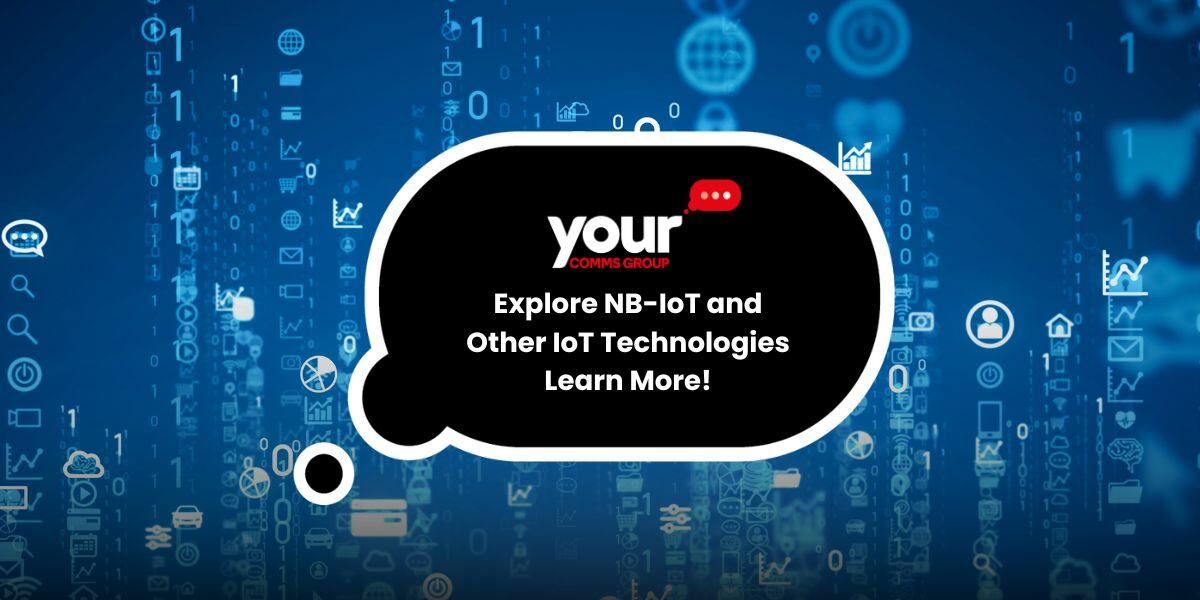In the digital era, the Internet of Things (IoT) is revolutionising how we interact with the world around us. IoT is making our environments more intelligent and responsive, from smart homes and wearable devices to industrial sensors and smart cities.
At the heart of this revolution are various IoT technologies, each with unique features and applications. Narrowband IoT (NB-IoT) stands out for its efficiency and connectivity in challenging environments.
Let’s break down the IoT types and look closely at NB-IoT and its place in the IoT ecosystem.
IoT Types Explained
IoT devices can be categorised based on application, connectivity, and technology. Here are the primary types:
- Consumer IoT: Includes devices designed for everyday use, such as smartwatches, fitness trackers, and home automation systems like smart thermostats and security cameras.
- Commercial IoT: Encompasses devices used in healthcare, retail, and agriculture, such as those for monitoring patient health, tracking inventory, and optimising crop yields.
- Industrial IoT (IIoT): Focuses on improving manufacturing, energy, and logistics efficiency through sensors and automation technologies.
- Infrastructure IoT: Relates to integrating physical and digital systems in urban environments, including innovative city technologies for traffic management and waste disposal.
NB-IoT: A Closer Look
Narrowband IoT (NB-IoT) is a Low-Power Wide-Area Network (LPWAN) technology that enables wide coverage and deep penetration with low power consumption. It’s designed to connect many devices over long distances, making it ideal for applications requiring small amounts of data over extended periods.
Here’s why NB-IoT is a game-changer:
- Low Power Consumption: Devices can operate on a single battery charge for years, reducing maintenance and operational costs.
- Wide Coverage and Deep Penetration: NB-IoT signals can reach underground and deep inside buildings, perfect for utility meters, structural health monitoring, and agricultural sensors.
- Cost-Effective: Low device complexity and minimal infrastructure requirements make NB-IoT an affordable option for scaling IoT solutions.
- High Capacity: Supports thousands of devices per mobile, enabling the mass deployment of IoT sensors and devices.
Other IoT Connectivity Technologies
While NB-IoT is making waves, it’s just one of the many technologies powering IoT. Others include:
- LTE-M (LTE Cat M1) offers higher data rates and supports voice and mobile applications, making it suitable for wearables and in-vehicle devices.
- LoRaWAN: A long-range, low-power technology ideal for rural and remote IoT applications, such as environmental monitoring and smart agriculture.
- Sigfox: Provides low-cost, low-power connectivity for devices that need to send small amounts of data over long distances.
Conclusion
- The Internet of Things is a diverse and rapidly evolving field, with technologies like NB-IoT leading the charge in connecting the world in ways we never thought possible.
- Whether through consumer gadgets, commercial tools, industrial automation, or smart city infrastructures, IoT is transforming our lives and industries.
- Understanding the types of IoT and the technologies behind them, like NB-IoT, is essential for grasping the potential and navigating the future of this digital revolution.
Discover how Your Comms Group can help you leverage the right IoT technologies for your business. Contact us today to explore tailored IoT solutions.



